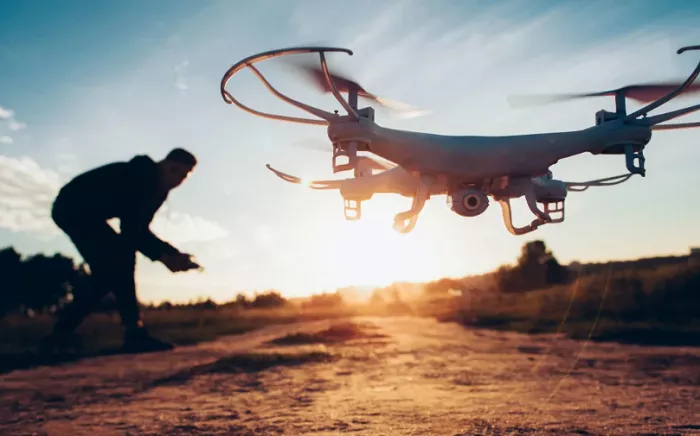The Transport Accident Investigation Commission (TAIC) is urging tighter regulations for drone operations following a near-collision between an Air New Zealand passenger flight and a drone in April 2024. The close call occurred at 2,000 feet on the plane’s approach to Auckland Airport.
The flight was traveling from Christchurch when it came dangerously close to what investigators believe was a drone. The TAIC found that the drone violated regulations prohibiting drones from flying within four kilometers of airports, except in approved circumstances. However, the drone and its operator could not be identified.
Jim Burtenshaw, Manager of Air Investigations, emphasized that both the Ministry of Transport and the Civil Aviation Authority should work to fully integrate drones into the aviation system, ensuring that rules evolve with new developments and best practices.
“Most drone users follow the rules, but some either aren’t aware of them or ignore them, expecting no consequences,” Burtenshaw said. “Drone operators must avoid aircraft, and anyone flying a drone should first learn how to operate it safely and know where they can and cannot fly.”
Three Key Safety Issues Identified
Air investigator Ian McClelland highlighted three main safety issues uncovered during the investigation:
- The need for better education about regulations for both pilots and drone operators.
- A disciplinary approach for operators who repeatedly break the rules.
- Treating drone pilots as part of the aviation system with similar responsibilities and expectations.
The Civil Aviation Act of 2023 states that operating an aircraft carelessly is an offense, punishable by fines of up to $30,000 for individuals and $100,000 for companies.
Ministry of Transport Response
The Ministry of Transport agreed with the commission’s findings but noted that it could not fully implement the recommendations due to the lack of established international standards for drone use. However, the report pointed to practices in countries like the United States, Canada, and Europe, which have set requirements for drone operators.
In Europe, drone operators must complete online training and obtain a competency certificate. The United States requires a safety test and proof of completion, while some countries also mandate drone registration.
Currently, New Zealand does not require these measures for drones weighing less than 15 kilograms under the Civil Aviation rules.
The Ministry said it is working with the Civil Aviation Authority on several drone-related projects and that some of the recommendations are being partially accepted.
“All regulators are working together to find solutions to the challenges posed by drones,” the Ministry said.
A Call for Drone Licensing
Dr. Isaac Henderson, chair of Unmanned Aerial Vehicles NZ, warned that the situation could have had more serious consequences. A drone collision could cause expensive repairs or, in the worst case, an engine fire or windshield damage that could injure pilots.
Henderson argued that implementing a licensing system for drone operators could improve safety. “A license would limit what drone operators can do, ensuring they know how to fly safely and follow regulations,” he said. “For higher-risk operations, licensing would help ensure that only qualified individuals are allowed to operate drones in sensitive airspace.”
He also suggested that a certification process could be introduced for organizations conducting specific drone operations, which would involve training and risk assessments.
Enforcing the Rules
Research referenced in the TAIC report, co-authored by Henderson, found that about 1.3 percent of drone operators break three or more civil aviation rules. These rogue operators, he argued, need more enforcement, similar to how speeding tickets are used to remind drivers to follow traffic laws.
Henderson highlighted that drones have a low barrier to entry, with many operators simply purchasing a drone and immediately becoming a commercial operator without any formal training. He believes that licensing and stricter enforcement would help bring drones in line with the rest of the aviation sector, benefiting responsible operators while cracking down on rule-breakers.


